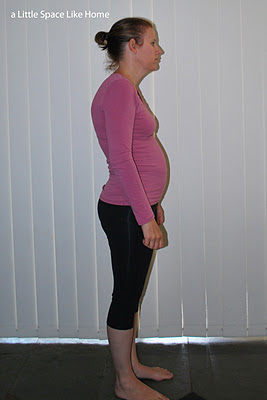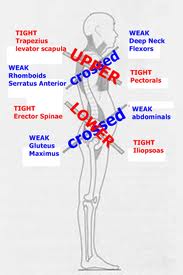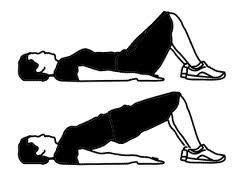Now it's your turn. You get to be the coach!
A client comes in and wants to run a half marathon, reduce her injury risk and, oh yeah, get rid of some bra flab. Without any further information other than the picture below, I'd like you suggest a few exercises. 
Which of the following exercises are must-do and which would you leave out for a while?
Squats?
Push-Ups?
Bicep Curls?
Crunches?
By the way, does running even make sense for this woman?
My answer would be “No” to all five questions. Surprised? Huh? Don't squats make our legs stronger??
Based on nothing other than a basic postural assessment, you can observe several musculoskeletal tendencies that make all of those “front-of-the-body” exercises inappropriate for her right now. She exhibits the all-to-common upper-crossed and lower-crossed syndromes. This means that certain muscles are tight and other opposing muscles are weak.
musculoskeletal tendencies that make all of those “front-of-the-body” exercises inappropriate for her right now. She exhibits the all-to-common upper-crossed and lower-crossed syndromes. This means that certain muscles are tight and other opposing muscles are weak.
This is exactly what happens when you sit for a living. A society of convenience ain't such a great thing after all, perhaps. I see this postural pattern a lot. A LOT.
So what exercises should she focus on?
Well, if she came to me, I'd screen her movement and take her health/training history first. What if there's an under lying condition? What if she has pain with certain movements? If this is what you look like from the side, then please see a fitness professional who knows their stuff! Do NOT pass GO and do NOT attend your local body thrashing bootcamp.
Here are some safe options to get started.
Start with a 5-10 minute foam rolling routine that addresses the tight areas. This turns down the volume on overactive muscles. The hip flexors in the front of the hips are of particular interest, for example. If you find a painful spot, rest on it and breathe. The pain should subside after 5-10 breaths.
Next, activate the weak, inhibited muscles. The glute bridge is a classic option. Push your hips to the ceiling, but DO NOT arch your lower back. Get the movement from the hips. Activation exercises are not performed to fatigue muscles, just to wake them up. 8 reps is enough.
While on your back, reconnect with your lower abdominals with a “dead bug” exercise. The idea is to flatten and pressurize the arch of your low back into the floor and then move your arms and legs freely. The straighter you can keep your legs and the more you can lower them (while maintaining pressure), the stronger your abdominals.
Eventually, the goal would be to get up off the floor and do some strength training. Think “back of the body”. Some great examples would be:
*Horizontal plane rows like the “chest supported row”
The idea is to go after those weak, inhibited muscles and really get strong in the patterns that, thanks to sitting, we tend not to use in our everyday life.
Yeah, it might be a good idea to do more squats in the future, but first I'd submit that she'll have to learn what a proper glute engaging squat feels like. When someone has this type of common posture issue they probably haven't squatted properly in a LONG time. The worst thing you can do if you've been out of shape is to start reinforcing lousy movement patterns by squatting repeatedly with poor form. Don't be that guy or girl.
So does she have any hope for running? Sure! Just not now. Get the posture issues worked out and gradually, SLOWLY add a few miles.
Sometimes the hardest part of my job is telling someone that I won't train them for, say, the Broad Street Run. Could you do it? Maybe. But are you a big ol' injury waiting to happen? Yup.
Let's “train to train”. Cool?
